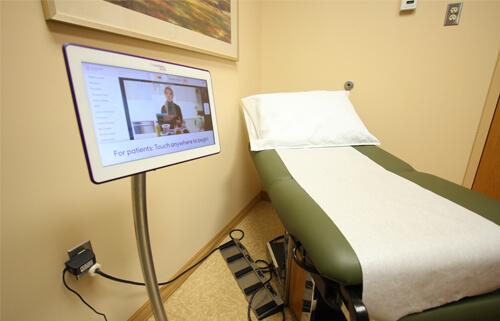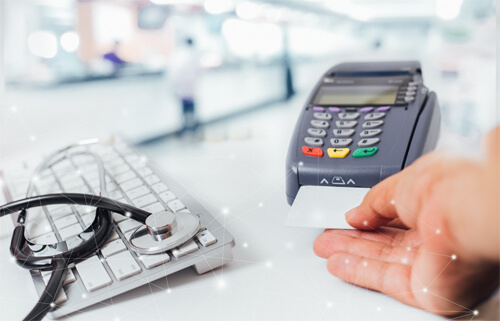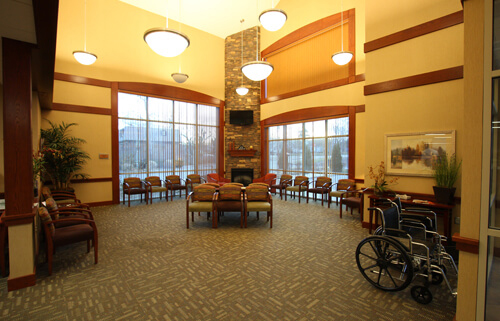Balloon-assisted (or “deep”) enteroscopy is a procedure used by physicians to visually examine the small intestine to effectively diagnose and treat diseases in the area. This outpatient procedure is typically performed on patients who have problems with the small intestine such as bleeding, strictures (narrowing), abnormal growths like polyps, inflammation or tumors.
What is Involved in a Balloon-Assisted Enteroscopy?
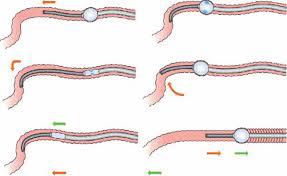 The balloon-assisted enteroscopy procedure provides live images of the small intestine that are captured using a long endoscope (a thin, flexible tube with a light and camera on one end) that is inserted either through the patient’s mouth (antegrade) or anus (retrograde). To advance the endoscope through the gastrointestinal (GI) tract, the enteroscopy apparatus uses an overtube and an inflatable balloon (or balloons, for the double-balloon technique) that is intermittently inflated and deflated, causing it to grip the walls of the small intestine and move through the tract. This process causes the small intestine to pleat over the overtube, the same way a curtain is pulled over a curtain rod, to advance the endoscope.
The balloon-assisted enteroscopy procedure provides live images of the small intestine that are captured using a long endoscope (a thin, flexible tube with a light and camera on one end) that is inserted either through the patient’s mouth (antegrade) or anus (retrograde). To advance the endoscope through the gastrointestinal (GI) tract, the enteroscopy apparatus uses an overtube and an inflatable balloon (or balloons, for the double-balloon technique) that is intermittently inflated and deflated, causing it to grip the walls of the small intestine and move through the tract. This process causes the small intestine to pleat over the overtube, the same way a curtain is pulled over a curtain rod, to advance the endoscope.
How Do You Prepare for the Procedure?
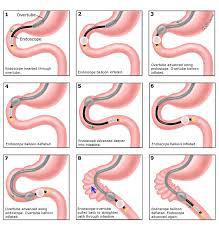 Before undergoing a balloon-assisted enteroscopy, your GHP physician will go over some pre-operative instructions that you will need to follow in the days before your procedure. Following these instructions is essential to limit surgery risks and provide the best results.
Before undergoing a balloon-assisted enteroscopy, your GHP physician will go over some pre-operative instructions that you will need to follow in the days before your procedure. Following these instructions is essential to limit surgery risks and provide the best results.
- Stop certain medications. Prior to surgery, your GHP physician and their staff will need to be made aware of all medications that you are taking, especially blood-thinning medications. These may include Coumadin (warfarin), Plavix (clopidogrel), Xarelto (rivaroxaban), Pradaxa (dabigatran), Eliquis (apixaban) and Lovenox (enoxaparin). Since the use of these medications increases the risk of excessive bleeding, they should be stopped prior to your procedure. If you are using insulin, the dosage or timing will also need to be adjusted the day of the procedure. Doctor-prescribed aspirin may be continued before your procedure. In addition, your GHP physician asks that you provide them with a list of medications to which you are allergic.
- Stop eating hours beforehand. Refrain from eating anything starting the midnight before your procedure is scheduled.
- Use our cleansing routine the day before. For a retrograde or lower exam, your GHP physician’s office will prescribe a cleansing routine (or “prep”), which consists of a powerful liquid laxative that is to be taken the day before the procedure in order to prepare your bowels. This cleansing routine is the MOST IMPORTANT part of the procedure. Your GHP physician’s office will give you further instructions on following this cleansing routine and other details to follow on the day before the procedure. These instructions include following a clear liquid diet the day before the procedure, and drinking lots of liquids.
What Happens During a Balloon-Assisted Enteroscopy?
Single balloon-assisted enteroscopy with your GHP physician is an outpatient procedure that takes approximately 60-75 minutes to complete. Upon checking in, you will be escorted to the “pre-op” area where an IV will be placed and nurses will take down your medical information. At this time, you will also meet with an anesthesiologist to discuss the sedation used for the procedure.
You will then be taken to a procedure room and connected to monitors that will monitor your blood pressure, heart rate and blood oxygen levels throughout the course of the procedure. Once this is finished, you will then be sedated for the duration of the procedure (not awakening until after it is complete). To prepare for the procedure, you will be placed on your left side, and a “bite block” will be inserted into your mouth (to prevent the endoscope from damaging your teeth as well as to prevent damage to the scope). The endoscope is then passed through your mouth and the exam is performed.
What Should You Expect after the Procedure?
Immediately after the procedure, you will be returned to the “post-op” area to recover from sedation. During this time, you will be monitored for any potential complications from the procedure and/or sedation. When you are fully recovered, your GHP physician’s will give you an explanation of the findings from the procedure (this report is preliminary, however, and it may take several days before the final results of the biopsies or information regarding the polyps removed are complete). Along with the findings, your GHP physician’s will provide you with a copy of the procedure report, patient information handouts and follow-up instructions.
Due to the effects of sedation, patients are instructed not to drive, operate machinery or make important decisions for the 24 hours following a balloon-assisted enteroscopy. You will need to arrange for someone to drive you home after surgery. The nursing staff will review these and other important post-op instructions with you prior to discharge.
Although complications associated with this procedure are rare, it is important to recognize them early. Contact the Gastroenterology Health Partners’ office if you notice severe abdominal pain, fever and chills, or excessive rectal bleeding or black stools.
Disclaimer: This information is intended to provide general guidance and does not provide definitive medical advice. It is not a definitive basis for diagnosis or treatment in any particular case. This material does not cover all information and is not intended as a substitute for professional medical care. It is important that you consult your doctor regarding your specific condition, contraindications and potential complications.

